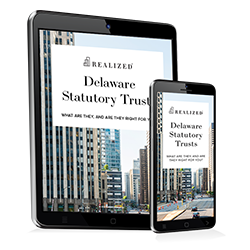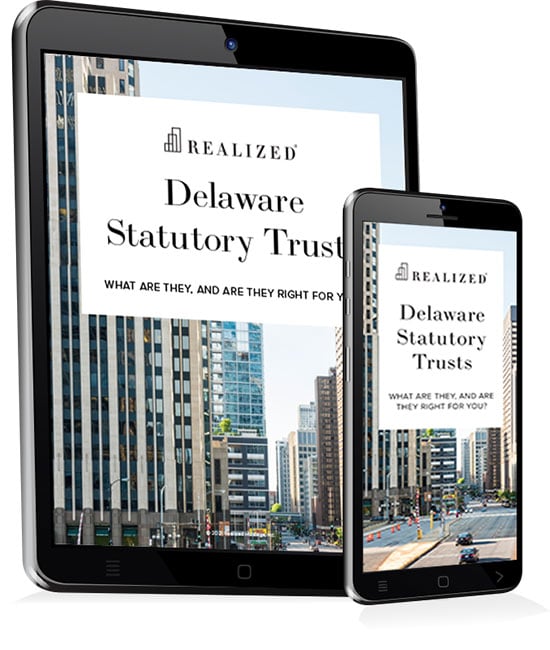
Delaware Statutory Trusts (DSTs) are powerful investment vehicles, offering advantages like passive income and potential tax deferral for capital gains taxes. However, these trust entities are not without risk, and one of the most concerning is sponsor bankruptcy. So, what does actually happen if a Delaware Statutory Trust sponsor goes bankrupt?
Realized 1031 shares the implications of such an event below, and what exactly you can do as an investor to make informed decisions.
The Role of the Sponsor
DSTs have a rigid structure to maintain compliance with various rules, including Revenue Ruling 2004-86. To maintain the tax-deferred status, DSTs must only be controlled by the sponsor. Sponsors are in charge of various aspects of the investment, from structuring the actual DST to overseeing day-to-day operations. In addition, the sponsor is responsible for communication with investors, providing reports on performance or distribution.
The bottom line is, the sponsor plays a central role in the DST. However, the owner of the property is still the DST, which is an important distinction in the context of bankruptcy.
DST Bankruptcy: Definition and Effects
When a sponsor declares bankruptcy, that means that it cannot pay its debts with its assets. There are two types of bankruptcies, Chapter 7 and Chapter 11. The former entails liquidating all the sponsor’s assets to pay for its dues.
Thankfully, sponsors don’t own DST properties. As such, their bankruptcy doesn’t mean that the DST will be dissolved, so the assets can’t be used to pay debts. Instead, the sponsor will cease operations as it attempts to address its outstanding debt.
Investors can be confident that the properties remain untouched, but the next problem is disruptions in management. Given the role of the sponsor, their leaving would create uncertainty around who will take over the responsibilities. Investors cannot take over as this action is prohibited and may result in immediate recognition of the deferred capital gains.
What Happens Next?
If the sponsor is stopping operations and investors aren’t allowed to make any decisions, it may seem like the DST will come to a standstill. Thankfully, sponsors themselves can appoint an independent successor to work as trustee before bankruptcy procedures start. This trustee is usually a third-party fiduciary named in the trust documents ahead of time.
The trustee can then step in to manage the DST, ensuring that no investor takes control of the trust entity and maintains its 1031 exchange eligibility. It’s during this transition that the effects of the original sponsor’s bankruptcy become more apparent.
- Instability and Adjustment: The new trustee may take some time to adjust to the DST and its operations. This could result in issues with cash flow, communication methods, and property management practices.
- Impact on Distributions: As cash flow is disrupted, investors may face a temporary loss of regular income.
- Loss of Confidence: The reputation of the DST could suffer, even if the properties remain stable.
Given these possibilities, the best practice for DST investors is to be more selective of sponsors. While no one is immune to bankruptcy, sponsors with proven track records and financial strength are less likely to face this issue.
Wrapping Up: Effects of a DST Bankruptcy
A sponsor’s bankruptcy can create uncertainty, but thanks to the DST’s legal structure, the real estate itself is usually protected. The properties remain in the trust, and investors retain their ownership rights. The biggest challenges are short-term: management transitions, communication gaps, and possible distribution delays. As such, choosing experienced and reputable DSTs is still the most proactive strategy you can use to minimize the chances of encountering this scenario.
Sources:
https://www.investopedia.com/articles/01/120501.asp



